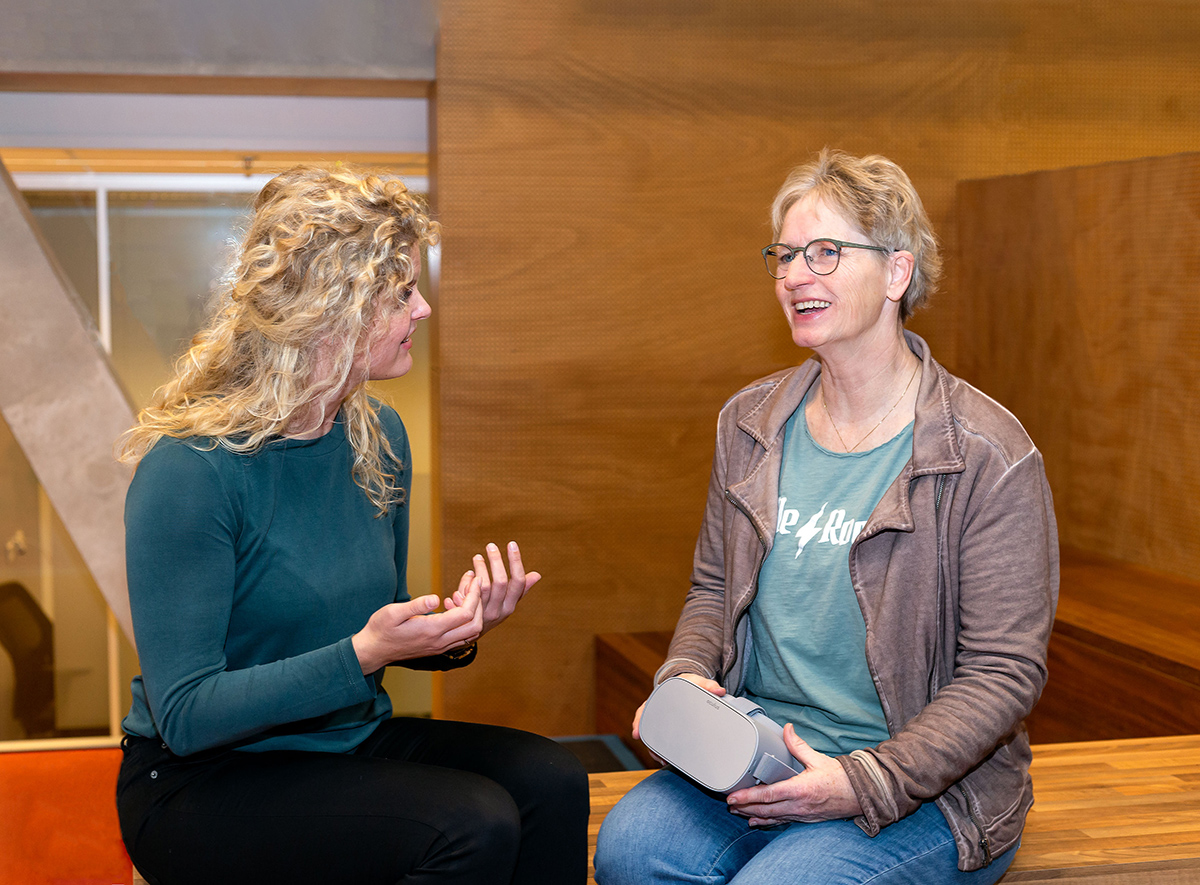Digital innovations for our health are many and can be applied relatively quickly. Reducept is also regularly asked whether it is not available too soon. What are the rules and risks?
What is a digital innovation for health?
Good to think about first, what are we talking about? The digital innovations for health I am talking about in this article are programs that make use of modern technology. In addition, they are programs that want to promote health, without administering or injecting anything into the body.
We're mainly talking about apps on smartphones, smartwatches and in the case of Reducept, an app for Virtual Reality.
What are the risks?
Let me start with the risks. The biggest risk is that uninvestigated applications come out that actually harm people. So what should we think about? Maybe a fitness app that encourages people to exercise when their heart rate is too high, or a mindfulness app that leads to delusions...?
Another risk is that an intervention 'does not work'. That not enough research has been done, but the innovation is already in use. While others are using it. Both of these things are being considered.
Regulation from outside
The first risk is covered as much as possible by 'external parties'. Nobody wants to be responsible for the delivery of a harmful product. Before an application aimed at improving health can become available on a platform (Apple store, Google play or the Oculus Store), it is extensively tested by this 'distributor'.
In addition, there are laws and regulations to prevent harmful digital products from becoming available. In addition to regular legislation, there are certifications that companies can use to demonstrate that they comply with certain regulations.
Usually, digital products focus on health gains rather than damage. A digital product is non-invasive, and therefore quickly less harmful. In addition, companies (such as Reducept) can often show the development and testing history of their product.
But what if it doesn't work?
A second risk is that an innovation doesn't work - or doesn't work properly yet. That's a grayer area. It's not forbidden to market digital products that don't work (if it's wise, it's something else...).
In addition, as a company you can of course take a good look at where your innovation fits in with the current standard of certain care. If we mention Reducept as an example, Reducept makes use of pain knowledge according to two important standards. Explain pain' by Moseley, and the guidelines for digital education according to IASP. The strategies applied in Reducept are translations of exercises that I have been using in my clinical practice with patients for years. These exercises come from treatment streams that have been the subject of research for years. The combination is therefore innovative (offering multiple exercises and education in VR), but the knowledge and principles have existed for a long time.
In addition to a basis in both science and clinical practice, you as a company can of course decide to stimulate research into your innovation. At Reducept we find research extremely important, and we stimulate research into our application. For example, to compare the results with comparable care that is delivered 'non-digital'.
The best regulation that eventually takes place is that of 'the market'. You can still do so much marketing, if a product doesn't work it won't be used in the end and it will go around. If your product does connect to a certain target group, the adaptation and feedback will show in which way it will be used and with which results. That may not have the accuracy of 'science', but in my opinion it is the most important feedback. The feedback from the practitioners who actually work with people who are in pain, and the progress they make in treatment.
The need for digital innovations - what is the alternative?
Another point that is often raised is that digital alternatives are desperately needed. The population is ageing and the number of healthcare providers per patient will decrease drastically in the coming years. This is no reason to start all kinds of innovations headlong; there must certainly be safety and regulation. However, it does increase the need for innovations, and innovations will (have to) be implemented more quickly than before. Market demand is increasing.
The speed of the digital world
Sometimes we are rightly asked whether it would not be better to do more research first, and then implement it. In the end, that is a choice everyone has to make for themselves. Our passion lies in innovating in digital health and translating treatment methods into a whole new format. The changes in the digital world are going fast. So fast, that the 'traditional way' of proof is not working. Treatment providers using Reducept regularly see updates, changes, additions and even new training components appear. In addition, Virtual Reality will receive a major upgrade in a number of years' time and may even switch to Augmented Reality. It requires a different approach, also in research. After all, a number of large studies prove that Reducept version 1.0 works in VR, what does a new version of VR say about Reducept version 5.0?
For that last point, in addition to clinical researchers, we also work with data researchers. In order to be able to continuously keep track of changes and updates in the data as well, which changes occur and what effect they have.
Because that is perhaps the most important thing. We also upgrade our way of researching and 'collecting evidence'.


